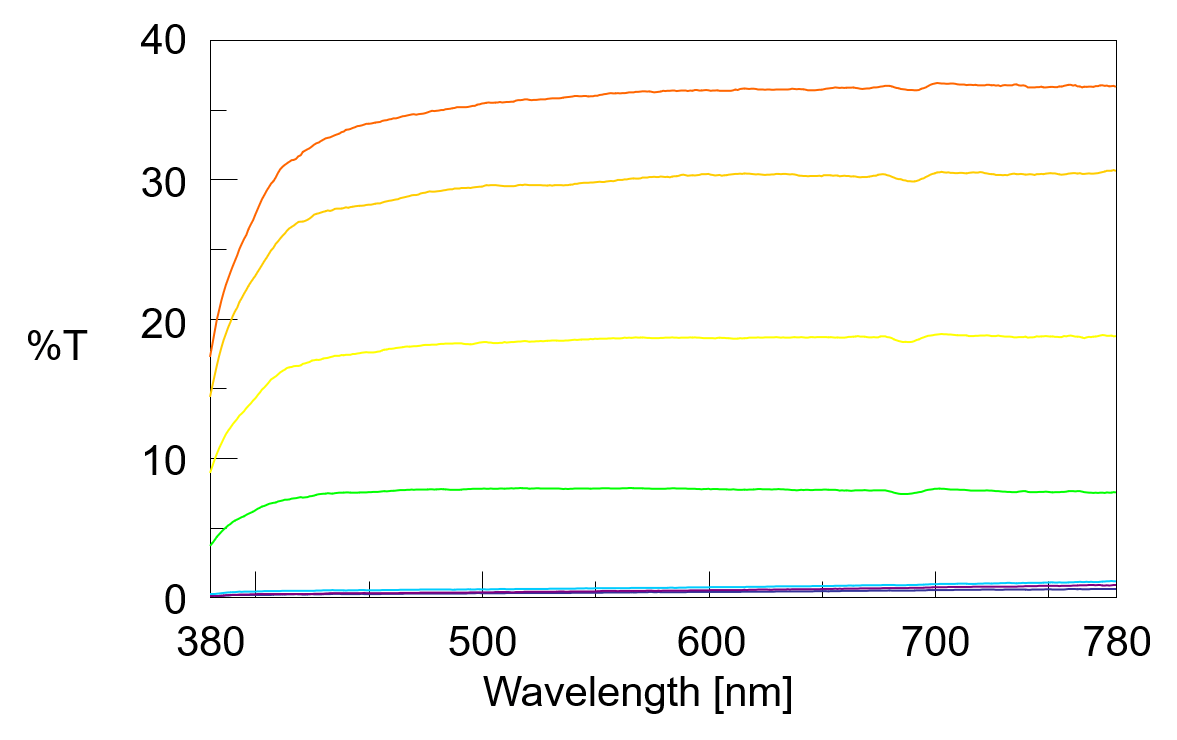Introduction
Privacy films for smartphone displays are used to prevent bystanders from viewing the user’s phone. These films are composed of louver layers of transparent and light shielding layers that are interlaminated. Depending on the height and pitch of the louver layers, the screen view can be obstructed at specific viewing angles.

Figure 1. Structure of louver layer (left) and picture of privacy film sample (right)
Absolute reflectance can be used to evaluate the viewing angle or the transmittance of the louver layers. By rotating the sample, source and/or detector angles around the sample, transmittance values can be obtained for a variety of different viewing angles (Figure 2).

Figure 2. Schematic of absolute reflectance measurement accessory
In this article, the angular dependence of the transmittance spectra of a privacy film is studied using absolute reflectance measurement.
Experimental
| Measurement Conditions | |||
| Detection Angle | 0° | Incidence Angle | -60-60º |
| Measurement Interval | 2° | Measurement Mode | %T, asynchronous |
| Wavelength Range | 380-780 nm | Bandwidth | 5 nm |
| Scan Speed | 400 nm/min | Response | 0.96 sec |
Keywords
UV-Visible spectrophotometer, Automated Absolute Reflectance measurement, Privacy Films
Results
The 3D plot in Figure 3 shows the transmittance spectra as a function of wavelength and incidence angle.

Figure 3. 3D plot of the transmittance spectra as a function of wavelength and incidence angle
Figure 4 illustrates the transmittance spectra at varying incidence angles and Figure 5 is the angle dependence transmittance spectra at 550 nm.

Figure 4. Transmittance spectrum of privacy film obtained every 10º

Figure 5. The angle dependence of the transmittance spectra at 550 nm
These data reveal that the privacy film absorbs blue light below 400 nm while keeping the transmittance constant above 400 nm, indicating that the film displays light without inducing a large color change. Figure 5 shows a transmittance of 5% near the viewing angle of ±32.5º, suitable for user privacy.






